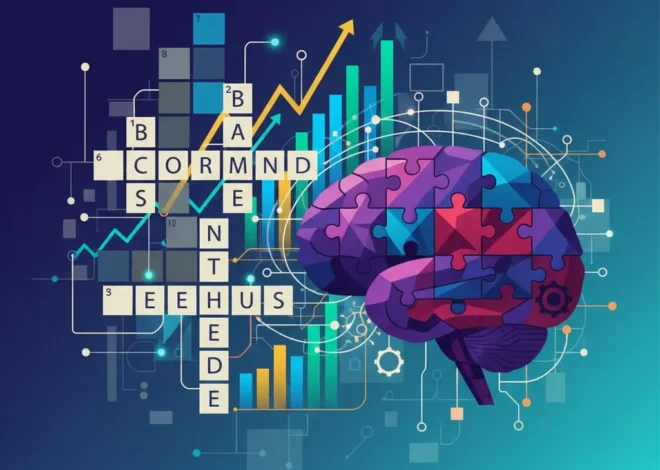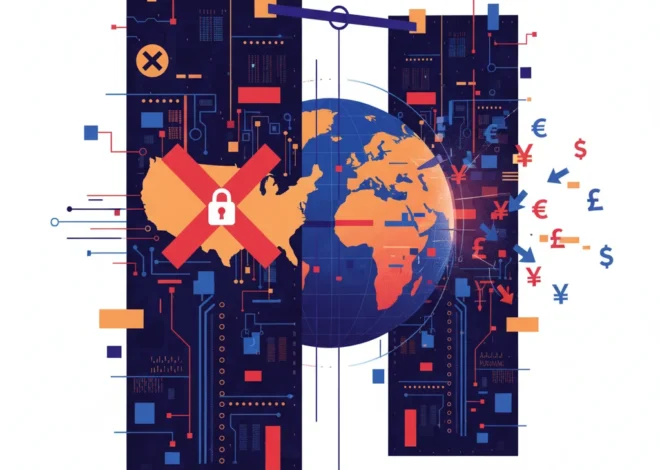
The Widening Gulf: Why the Fed Sees Wealth Inequality as the Next Big Threat to the US Economy
For years, the U.S. economy has presented a perplexing dual narrative. On one hand, the stock market has soared to new heights, corporate profits have been robust, and top-tier consumers have continued to spend. On the other, a growing number of American families are struggling with mounting debt, depleted savings, and the persistent pressure of inflation on essential goods. For a long time, these two stories ran on parallel tracks. Now, a top official at the world’s most powerful central bank is warning that those tracks are set to collide, with potentially disastrous consequences for the entire economy.
In a recent statement that sent ripples through the world of finance and economics, New York Federal Reserve President John Williams suggested that the growing financial strain on lower-income Americans is no longer a peripheral concern but a central factor in the Fed’s upcoming decisions on interest rates. This isn’t just about social equity; it’s a stark warning that the foundation of U.S. consumer spending is cracking, and it could be the canary in the coal mine for a broader economic downturn. As Williams noted, the widening gulf between the rich and the poor could be a decisive element in whether the central bank cuts rates to stave off a recession (source).
This blog post delves into the heart of Williams’ warning. We will explore the data behind this tale of two economies, analyze how wealth inequality acts as a hidden risk to the stock market and banking system, and discuss the profound implications for investors, business leaders, and the future of American finance.
The Fed’s Evolving Mandate: From Broad Strokes to a High-Resolution Picture
Traditionally, the Federal Reserve operates under a dual mandate: maintaining price stability (controlling inflation) and achieving maximum employment. Its primary tool for this is monetary policy, specifically adjusting the federal funds rate. Raising rates cools an overheating economy and tames inflation; cutting rates stimulates borrowing and spending to boost a flagging economy. Historically, the Fed has looked at aggregate data—national unemployment rates, overall GDP growth, and headline inflation figures.
However, Williams’ comments signal a significant and necessary evolution in this thinking. The aggregate data, while positive on the surface, masks severe underlying stress. While the official unemployment rate remains low, the financial health of those who are employed is deteriorating, particularly in lower-income brackets. The Fed is beginning to understand that an economy where only the top 20% are thriving is not a stable or sustainable one. Consumer spending accounts for nearly 70% of U.S. GDP, and if a substantial portion of that consumer base is forced to pull back, it doesn’t matter how well the wealthy are doing—the entire economic engine will slow down.
This shift represents a move from a low-resolution snapshot of the economy to a high-definition view, where the distribution of wealth and income is as important as the total amount. It’s an admission that the “average” American’s experience is no longer a reliable indicator of the economy’s true health.
Beyond the Ivory Tower: How New Rankings Are Redefining the Value of Business School Research
A Tale of Two Economies: The Data Behind the Divide
To understand the urgency in John Williams’ warning, we need to look beyond the headlines and examine the diverging realities of American households. While high-income earners have benefited from asset price inflation in the stock market and real estate, lower-income households have faced a different reality: the erosion of savings and a sharp rise in debt.
The following table illustrates the stark contrast in financial health across different income levels, painting a clear picture of the economic bifurcation that has the Fed concerned.
| Economic Indicator | Top 20% of Earners | Bottom 50% of Earners |
|---|---|---|
| Share of Household Wealth | Approximately 67% | Approximately 2.5% |
| Pandemic-Era Excess Savings | Largely intact, invested in assets | Largely depleted, spent on necessities |
| Credit Card Delinquency Rates (90+ days) | Relatively low and stable | Rising sharply, exceeding pre-pandemic levels (source) |
| Primary Source of Net Worth Growth | Stock market and investment gains | Wage growth (often outpaced by inflation) |
| Impact of High Interest Rates | Higher returns on savings and investments | Crippling costs on credit cards, auto loans, and mortgages |
This data reveals a fragile economic structure. The bottom half of the population, which represents a massive consumer base, has exhausted its financial cushion. They are now relying on high-interest debt to make ends meet, a situation that is unsustainable. According to the Federal Reserve Bank of New York, credit card debt has surpassed a staggering $1.1 trillion, with delinquency rates climbing fast. This is the “mounting problem” that Williams is referring to, and it poses a direct threat to economic growth.
The Ripple Effect: From Main Street’s Pain to Wall Street’s Problem
Why should a sophisticated investor or a business leader care about rising auto loan defaults or credit card delinquencies? Because these are not isolated events. They are leading indicators of a consumption slowdown that will inevitably ripple through the entire economy, affecting corporate earnings, stock market valuations, and the stability of the banking sector.
Here’s how the chain reaction unfolds:
- Reduced Consumer Spending: As households divert more income to servicing debt and essentials, they cut back on discretionary purchases—new cars, electronics, dining out, and travel.
- Lower Corporate Revenues: Companies in consumer-facing sectors see their sales decline. This isn’t just limited to retail; it affects manufacturing, logistics, and technology.
- Earnings Misses & Stock Market Correction: When revenues fall, corporate profits shrink. Companies begin to miss their quarterly earnings estimates, leading analysts to downgrade their stocks. This can trigger a broad market sell-off as investors re-evaluate future growth prospects. The high-flying stock market is ultimately tethered to the real-world spending power of the average person.
- Credit Events and Banking Stress: Rising defaults on loans put pressure on the financial institutions that hold that debt. While large banks may be well-capitalized, smaller regional banks and specialized lenders (like auto finance companies) can face significant distress, potentially leading to a credit crunch where it becomes harder for everyone to borrow.
This domino effect demonstrates that the stock market cannot remain decoupled from the real economy indefinitely. The financial stress of the bottom 50% is a direct threat to the portfolio returns of the top 10%. It is a systemic risk that has been building quietly beneath the surface of positive headline numbers.
Beyond the Ivory Tower: How 'Altmetrics' Are Redefining the Impact of Financial Research
Navigating the Divide: An Actionable Playbook for Investors and Leaders
Understanding this dynamic is crucial for making informed decisions in today’s complex economic environment. A “one-size-fits-all” approach to investing or business strategy is no longer viable.
- For Investors: It’s time to look beyond broad market indices. Differentiate between companies that cater to high-end consumers and those that rely on the mass market. Consumer staples (essentials like food and household goods) may prove more resilient than consumer discretionary sectors. Furthermore, scrutinize the loan portfolios of financial stocks, particularly regional banks and non-bank lenders. A focus on quality and strong balance sheets is paramount in this environment of bifurcated economics.
- For Business Leaders: Re-evaluate your target customer. Is your business model resilient to a slowdown in mass-market spending? This may involve diversifying product lines to include both value-oriented and premium offerings. Supply chain and inventory management become critical to avoid being caught with excess goods if consumer demand suddenly drops.
- For Finance Professionals: The concept of a “K-shaped” recovery—where different parts of the economy recover at different rates—should be central to all risk modeling and trading strategies. Stress-testing portfolios for a scenario of rising consumer defaults is no longer a theoretical exercise but a necessary precaution.
Can Financial Technology Bridge the Gap?
While the problem of inequality is vast, innovation in financial technology (fintech) offers potential tools to mitigate some of these pressures. The traditional banking system often fails to serve lower-income individuals effectively. Fintech can step in.
Platforms offering alternative credit scoring, for example, can provide access to fair credit for individuals without a long credit history. Earned wage access apps allow workers to tap into their paychecks before the official payday, avoiding predatory payday loans. Micro-investing platforms and financial literacy tools can help people build small nests of savings over time. Even blockchain technology, though still nascent and volatile, holds promise for reducing transaction costs and providing financial services to the unbanked and underbanked through decentralized finance (DeFi).
While technology is not a panacea for deep-seated economic disparities, it can provide crucial tools for building financial resilience at the individual level. A more inclusive financial system, powered by responsible fintech, is a more stable financial system for everyone.
Market Tremors: Analyzing the Financial Fallout of a Public Safety Crisis
Conclusion: A Call for Broader Economic Vision
John Williams’ warning is more than just a hint about the Fed’s next move. It is a fundamental call to re-evaluate how we measure and manage economic health. The gulf between the rich and poor is not merely a social or political issue; it is a critical vulnerability at the heart of the U.S. economy. As one Fed official put it, policymakers are paying closer attention to the “distribution of economic outcomes” (source).
For too long, the stock market has been seen as the ultimate barometer of economic success. Yet, if that success is not broadly shared, it rests on a fragile foundation. The mounting problems of everyday Americans are a clear and present danger to that foundation. Investors, leaders, and policymakers who ignore this widening gulf do so at their own peril. The next economic downturn may not be triggered by a global pandemic or a far-off financial crisis, but by the quiet, accumulating struggles of millions of households at home.


